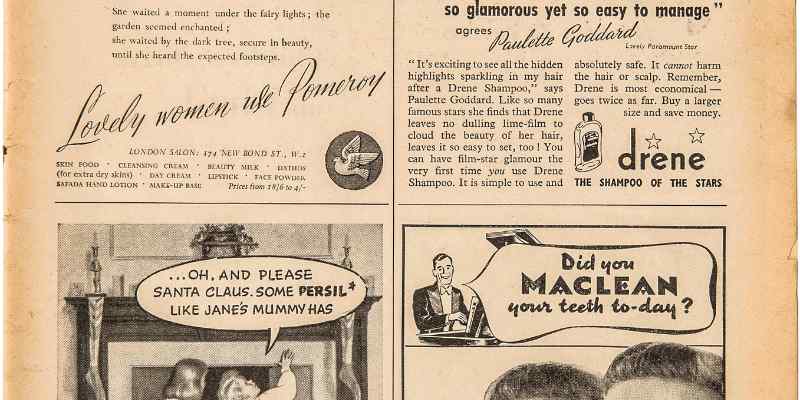Many believe content marketing sprouted with the dawn of the internet. But is that the entire truth?
Content has been around for ages, molding perceptions, driving actions. In fact, content marketing’s roots go deeper than you might think, way before the first click or like button.
Ready to journey through time?
Let’s understand what content marketing really is, and dive into its fascinating origins. By the end, you’ll see it’s not just a digital age marvel but an age-old craft, meticulously refined over millennia.
Did you know, for instance, that as early as 4200 B.C., ancient civilizations used content to record business transactions?
Or that the first-ever magazine was published in 1731, aiming to reach a specific audience?
Hop on. It’s time to decode the evolution of content marketing and appreciate its true legacy.
The Historical Roots of Content Marketing

Thousands of years ago, our ancestors used cave paintings to share stories, relay messages, and maybe even promote a product or two.
These weren’t just primitive doodles; they were the earliest ads!
Ancient Egyptians took it up a notch. They didn’t have the luxury of the internet, but they had papyrus.
Merchants scribbled promotions and posted them all around town. It’s funny to think – were these the first ‘banner ads’?
Fast forward to the Renaissance. Gutenberg’s printing press transformed the world. Suddenly, printed advertising wasn’t just for the elite; it was accessible to many.
And guess what? Businesses noticed.
They started producing flyers and leaflets.
They weren’t just pushing products, they were crafting stories. It was a bold new age of marketing.
18th & 19th Centuries: Enter Newspapers & Magazines

By the late 1700s, newspapers took Europe and America by storm.
And with them came advertising columns.
Data shows that by the mid-19th century, advertising revenue became a critical funding source for many publications.
Magazines, too, weren’t far behind.
Brands could now engage their audience with richer, longer content pieces.
Look at “The Furrow,” launched by John Deere in 1895.
Not just a catalog, it educated farmers on new techniques. It’s a stellar example of early content marketing.
From ancient scribbles to polished magazine articles, content marketing has been with us longer than we often realize.
And trust me, its journey is as captivating as its present. Stay with me as we navigate this intriguing path together.
Early 20th Century: Pioneering Brands & Content Marketing

Ann Handley here, ready to guide you further back into the annals of content marketing.
Case Study: The Michelin Guide
The year was 1900. Cars? They were a luxury, owned by a select few. And Michelin?
They were selling tires. But they faced a dilemma: How do you increase the demand for tires in a market where cars aren’t widespread?
Cue the genius. Michelin launched the Michelin Guide, offering drivers tips on car maintenance, listings of accommodations, and even maps.
The primary aim? Encourage road trips, and indirectly, tire usage.
Today, mention ‘Michelin’ and many think of fine dining before tires. It’s a testament to the power of innovative content marketing.
Case Study: Jell-O’s Recipe Books
In the early 1900s, Jell-O faced a challenge. How do you popularize a product that people are unfamiliar with?
Their ingenious solution: give them ideas on how to use it.
Jell-O recipe books made their way into households. These weren’t just recipe collections; they painted a lifestyle, suggesting ways to make daily meals delightful.
The result? Jell-O didn’t just promote a product; they laid the foundation of a dessert culture. Their sales skyrocketed, and their brand became a household name.
Radio Waves and Branded Shows
The 1920s and 30s saw the emergence of a game-changing medium: the radio.
Families huddled together, ears pinned to the device, as voices from afar painted pictures with words.
Recognizing an opportunity, brands jumped in. They didn’t just advertise; they sponsored entire shows.
Think of the iconic “Soap Operas” – so named because soap companies often sponsored these daytime dramas.
Radio allowed brands to craft narratives, stories, and emotions. It wasn’t just about selling a product; it was about creating an experience.
These early pioneers, with their innovations, laid the groundwork for modern content marketing.
They didn’t have digital analytics or social media, but they had insight, creativity, and an undying spirit to connect with their audience.
They remind us that at the heart of content marketing lies a simple truth: it’s all about the story. Stick around, and let’s continue unraveling this fascinating tale.
Late 20th Century: The Age of Television & Mass Media

Hi, Ann Handley here, and I’ve got another chapter to share from the storybook of content marketing.
TV Commercials: The New Cultural Icons
The 1960s through the 90s heralded the golden age of television. And with it? The rise of TV commercials.
These weren’t just ads; they were minute-long sagas, capturing emotions, humor, and culture.
Remember Apple’s “1984” Super Bowl ad? Or Coca-Cola’s “I’d Like to Buy the World a Coke”?
They weren’t just selling products; they were shaping moments in cultural history.
The best of these commercials resonated because they touched upon shared experiences and emotions.
They weren’t mere advertisements; they were conversations.
Branded TV Segments: Subtle yet Impactful
As television evolved, brands got savvier.
It wasn’t just about standalone commercials; it was about integrating their message into programming.
This led to the rise of branded TV segments.
A cooking show featuring a particular brand of sauce or a talk show segment sponsored by a health brand.
The line between content and promotion blurred, and audiences loved it.
These segments provided value – whether it was in the form of information, entertainment, or both. Brands became educators, entertainers, and trusted advisors.
Brand Magazines & Newsletters: Beyond the Pitch
The latter part of the century also saw a renaissance in print, but with a twist. Brands started publishing their own content-rich magazines and newsletters.
Take LEGO’s Brick Kicks or Ford’s Ford Times.
These weren’t just catalogs; they told stories, shared ideas, and engaged communities.
By providing valuable content, these brands deepened their relationship with their customers.
They moved from mere sellers to trusted voices in their industry.
The late 20th century underscores a vital content marketing lesson: Engaging content isn’t about shouting the loudest; it’s about hitting the right notes.
It’s a dance between brand and audience, a choreography of content and context.
And as we look ahead, it’s clear that the dance is far from over.
So, lace up those dancing shoes and let’s step into the digital age.
The Digital Revolution: 1990s – Early 2000s

Hello again, Ann Handley here, steering our time machine to a pivotal moment in content marketing’s chronicles – the dawn of the digital age.
The World Wide Web: An Uncharted Frontier
The 90s brought us a game-changer: the introduction of the World Wide Web.
Suddenly, information wasn’t limited by physical boundaries.
The globe was connected in a web of digital content.
Brands quickly realized the potential. They could now reach audiences across continents, instantly.
Early adopters created rudimentary websites, establishing a digital presence.
It was the Wild West, and pioneers were staking their claims.
The Rise of Blogs: Everyone Has a Voice
By the late 90s and early 2000s, blogs began popping up. These weren’t just personal diaries; they were platforms with potential.
Companies saw an opportunity. A blog wasn’t just about thoughts and musings; it was a tool for business promotion.
Take Microsoft’s developer network blogs or Boeing’s “Randy’s Journal.” These brands were early birds, leveraging blogs to share insights, news, and stories.
For smaller businesses, blogs leveled the playing field.
They didn’t need massive advertising budgets.
With compelling content, they could attract, engage, and convert audiences.
Email Newsletters: Direct-to-Consumer Content
Just when we thought the digital revolution had peaked, along came another disruptor: email newsletters.
Companies quickly caught on. Newsletters allowed them to communicate directly with their audience, bypassing intermediaries.
Think of early successes like “Cool Site of the Day” or niche industry bulletins.
Through tailored content, brands nurtured relationships, turning casual visitors into loyal fans.
It was content marketing, but personalized, intimate, and incredibly effective.
The digital revolution transformed content marketing in unimaginable ways.
We went from broad strokes to fine-tuned targeting, from mass broadcasts to personal conversations.
As I pen this, it’s hard not to marvel at the leaps we’ve taken.
And trust me, the journey isn’t over. Join me as we delve even deeper into this ever-evolving realm.
2010s: The Social Media Explosion

Hey there, Ann Handley back again, this time to unpack a decade that reshaped content marketing like never before: the 2010s. Buckle up, because the social media boom was a whirlwind!
Mega Platforms: Facebook, Twitter, LinkedIn & More
If the early 2000s introduced us to the World Wide Web, the 2010s was all about social media dominating it.
Platforms like Facebook, Twitter, and LinkedIn weren’t just networking sites; they became content distribution powerhouses.
Brands, big and small, saw the writing on the wall.
Organic posts, promoted content, and viral campaigns became the order of the day.
Ever heard of Oreo’s “You can still dunk in the dark” tweet during the Super Bowl blackout? That’s real-time content marketing in action.
LinkedIn, on the other hand, established itself as the go-to B2B content hub.
Thought leadership articles, company updates, and professional insights found a dedicated audience here.
YouTube & the Video Content Renaissance
As the decade progressed, another format took center stage: video.
And YouTube was at the forefront.
With over 2 billion logged-in monthly users by the end of the decade, it’s no wonder brands flocked there.
But it wasn’t just about ads.
Tutorials, reviews, unboxings, and vlogs offered authentic ways for brands to communicate.
Dove’s “Real Beauty Sketches” campaign? A masterclass in video content marketing.
Platforms like Instagram and Snapchat further drove the video-first approach, with Stories and short-form content capturing the audience’s fleeting attention.
Influencer Marketing: A Symbiotic Relationship
The 2010s also introduced us to a new kind of celebrity: the social media influencer.
These weren’t Hollywood stars but everyday individuals with loyal followers hanging onto their every post.
Brands quickly recognized the potential.
Collaborating with influencers meant authentic endorsements and a ready audience.
The line between content marketing and influencer marketing started to blur.
Whether it was a beauty vlogger reviewing a new lipstick or a fitness influencer promoting workout gear, the content felt organic, relatable, and genuine.
Looking back, the 2010s were a content marketing rollercoaster, driven by social media’s dynamism.
We learned to be agile, to pivot, to ride the waves of platform algorithms, and above all, to stay authentic.
The landscape might’ve changed, but the essence remained: connect, engage, and inspire. Ready for what’s next? Let’s keep exploring.
Modern Era: Personalization, AI, and Beyond

Modern era is all about tech innovation, tailored experiences, and the intricate dance between humans and machines. Let’s break it down.
Big Data & The Age of Personalized Content
In today’s world, data is the new oil. Brands are swimming in a sea of user information, from browsing habits to purchase histories.
What does this mean for content marketing? Precision.
With insights from big data, brands can tailor content that feels less like a broadcast and more like a one-on-one conversation.
Ever get that uncanny feeling when an article or product recommendation seems to “get” you? That’s big data at work.
It’s not just about serving the right ad anymore. It’s about creating content experiences – from personalized email journeys to bespoke web content – that resonate on a deeply individual level.
AI-Driven Content: Tools of the Future
The rise of Artificial Intelligence has changed the content creation game.
Tools powered by AI can now generate content, optimize headlines, and even suggest topics based on trending discussions.
But it’s not about replacing human creators.
Instead, AI acts as a powerful assistant, enhancing productivity and sparking creativity.
Platforms like Grammarly or Copy.ai offer glimpses into a future where man and machine collaborate seamlessly.
However, a word of caution: While AI can offer structure and speed, the soul of content – its emotional resonance – still lies in the human touch.
Voice, Podcasts & New Ways to Consume Content

Content consumption is evolving rapidly.
With the proliferation of smart speakers, voice search is becoming mainstream.
Brands now need to think about how their content “sounds,” optimizing for conversational queries.
And then there’s the podcast boom.
With over 2 million podcasts and counting, audio content offers a fresh avenue for brands to tell their stories.
Whether it’s branded podcasts or sponsored episodes, it’s clear that our ears are the new frontier.
These shifts remind us that content isn’t static. It’s a living, breathing entity, always evolving to fit the medium and the moment.
We’re navigating uncharted waters in the modern era of content marketing.
With every technological advancement, the rules get rewritten.
But through it all, one principle stands firm: it’s about the audience. Understanding them, engaging them, and delivering value.
Here’s to forging ahead, embracing the new, but never losing sight of the human heart at content’s core. Shall we journey on?
Conclusion
If our journey has highlighted anything, it’s that content marketing is far from static.
From ancient civilizations utilizing the earliest forms of content to present-day innovations ushered in by technology, we’ve witnessed an evolution, a constant reshaping and refining.
Despite the transformations, the core essence of content marketing remains unchanged: it’s about connecting with the audience, telling stories that resonate, and providing value that goes beyond mere transactions.









